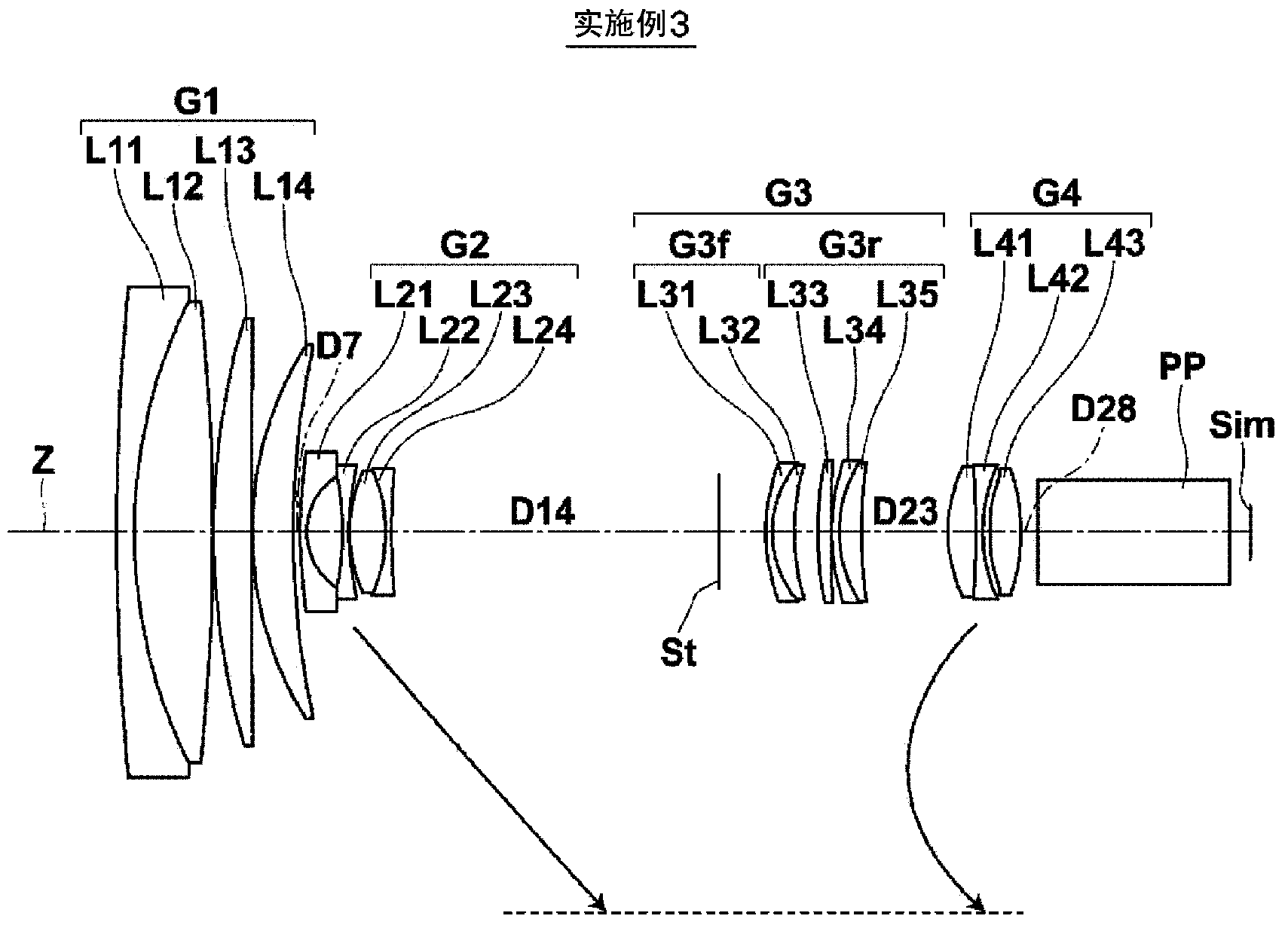Zoom lens and imaging device
一种变焦透镜、透镜群的技术,应用在放映装置、洗印装置、图像通信等方向,能够解决无法充分满足高变倍比和广角化的要求、不能达成广角化等问题,达到广角化低成本化、廉价构成、高变倍比的效果
- Summary
- Abstract
- Description
- Claims
- Application Information
AI Technical Summary
Problems solved by technology
Method used
Image
Examples
Embodiment 1
[0139] The basic lens data of the zoom lens of Example 1 are shown in Table 1, the other data are shown in Table 2, and the aspheric coefficients are shown in Table 3. Similarly, basic lens data, other data, and aspheric coefficients of the zoom lenses of Examples 2 to 11 are shown in Tables 4 to 33. Hereinafter, the meanings of the symbols in the tables will be described taking Example 1 as an example, and the meanings of Examples 2 to 11 are basically the same. Note that each numerical data shown in Tables 1 to 33 is normalized so that the focal length at the wide-angle end is 1. FIG.
[0140] In the basic lens data in Table 1, the column of Si indicates the i-th number (i=1, 2, 3....) surface number, the Ri column indicates the radius of curvature of the i-th surface, and the Di column indicates the surface interval on the optical axis Z of the i-th surface and the i+1-th surface. In addition, the sign of the radius of curvature is positive when the surface shape is conve...
Embodiment 2
[0164] Example 2 Lens data
[0165] Si
[0166] 【table 5】
[0167] Example 2. Other data
[0168]
[0169] 【Table 6】
[0170] Embodiment 2. Aspheric coefficient
[0171] face number
[0172] 【Table 7】
Embodiment 3
[0173] Example 3 Lens Data
[0174] Si
[0175] 【Table 8】
[0176] Example 3. Other data
[0177]
[0178] 【Table 9】
[0179] Embodiment 3. Aspheric coefficient
[0180] face number
[0181] 【Table 10】
PUM
 Login to View More
Login to View More Abstract
Description
Claims
Application Information
 Login to View More
Login to View More - R&D Engineer
- R&D Manager
- IP Professional
- Industry Leading Data Capabilities
- Powerful AI technology
- Patent DNA Extraction
Browse by: Latest US Patents, China's latest patents, Technical Efficacy Thesaurus, Application Domain, Technology Topic, Popular Technical Reports.
© 2024 PatSnap. All rights reserved.Legal|Privacy policy|Modern Slavery Act Transparency Statement|Sitemap|About US| Contact US: help@patsnap.com










